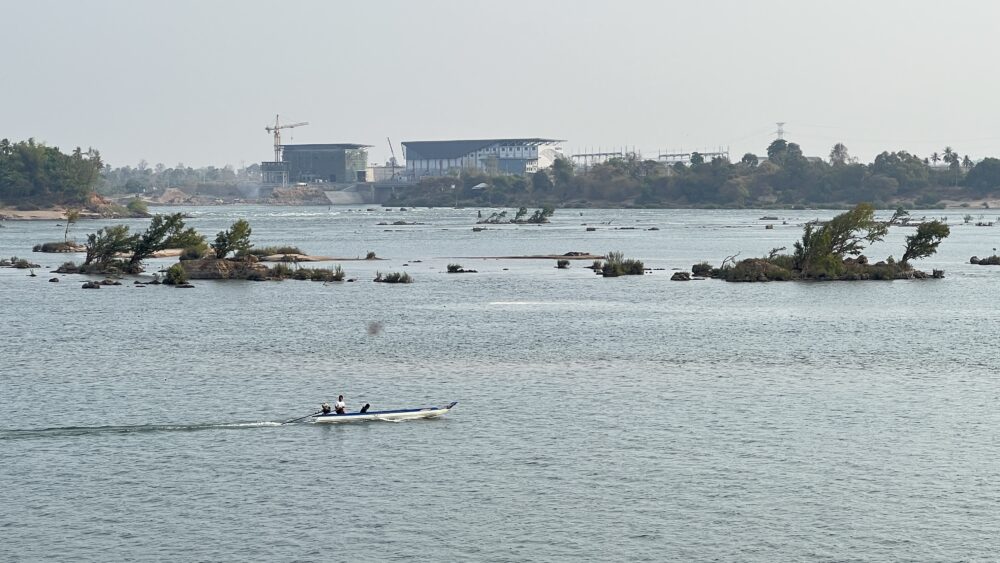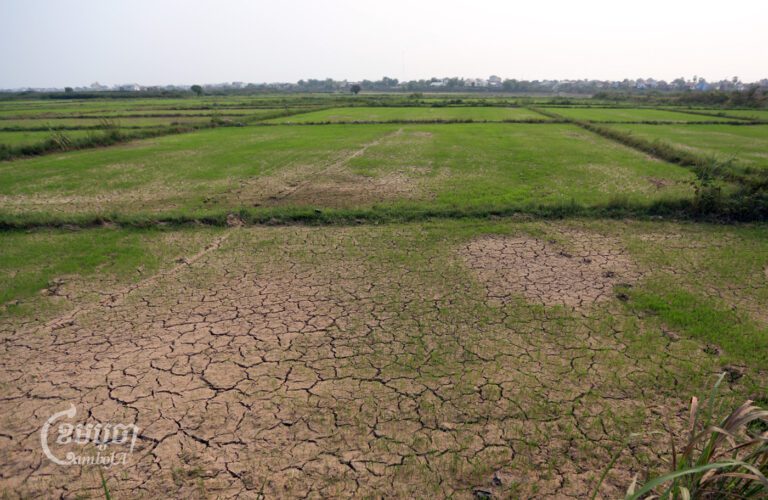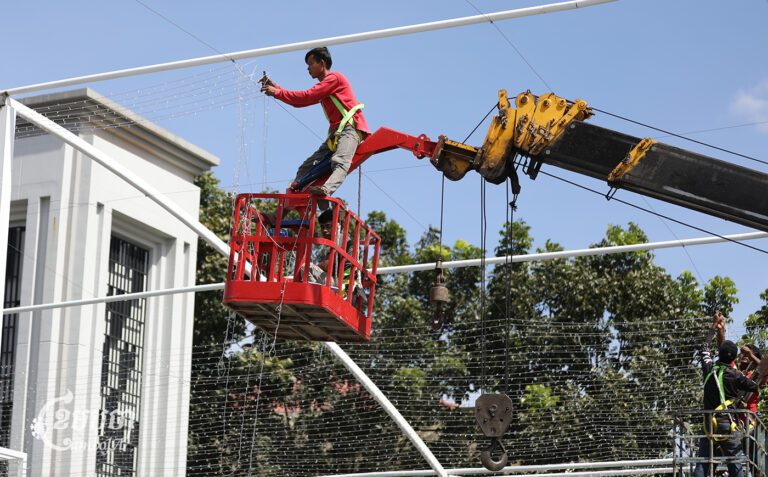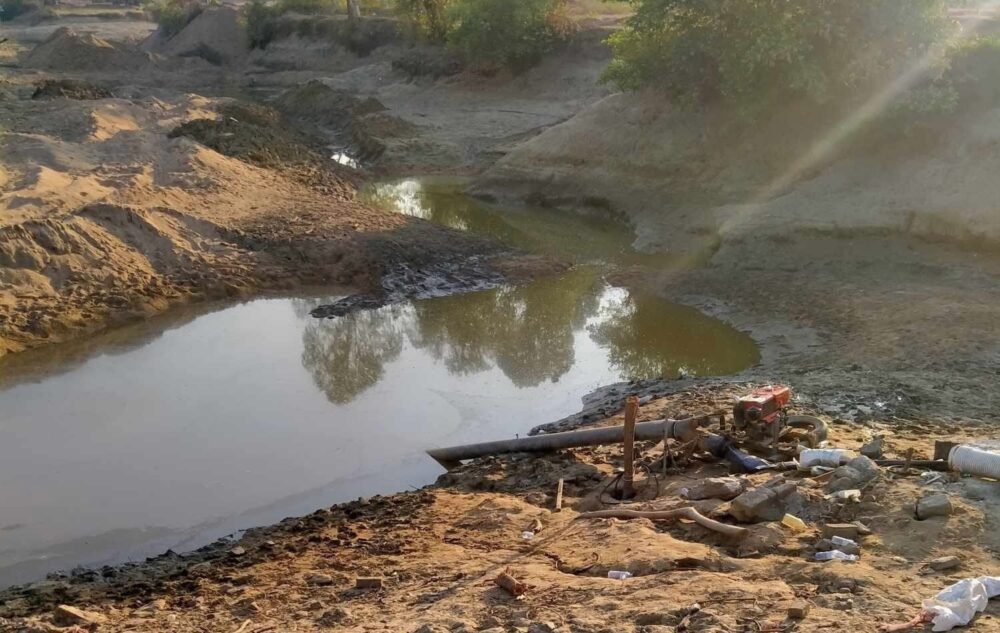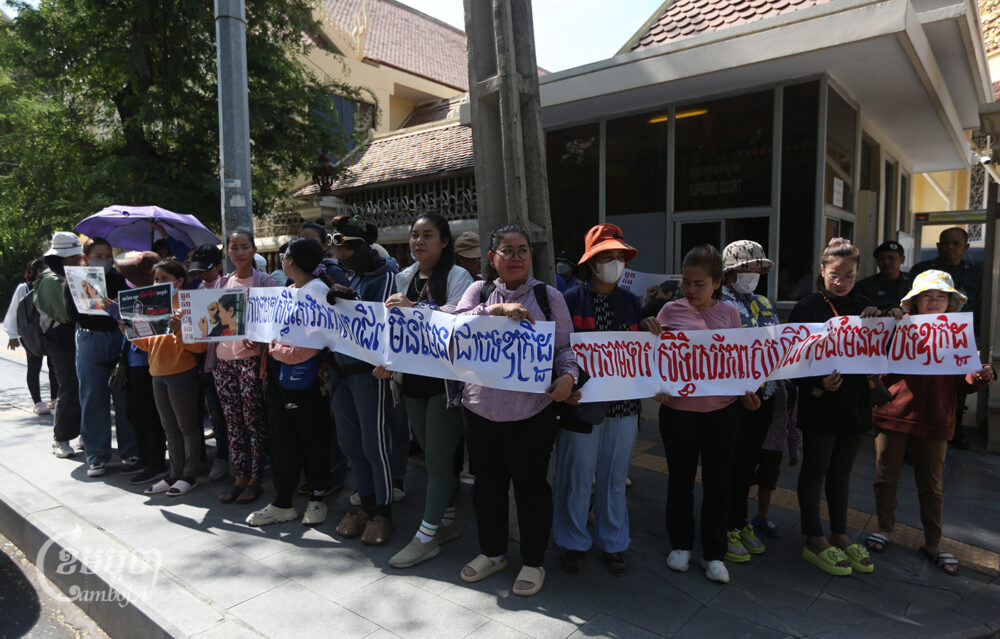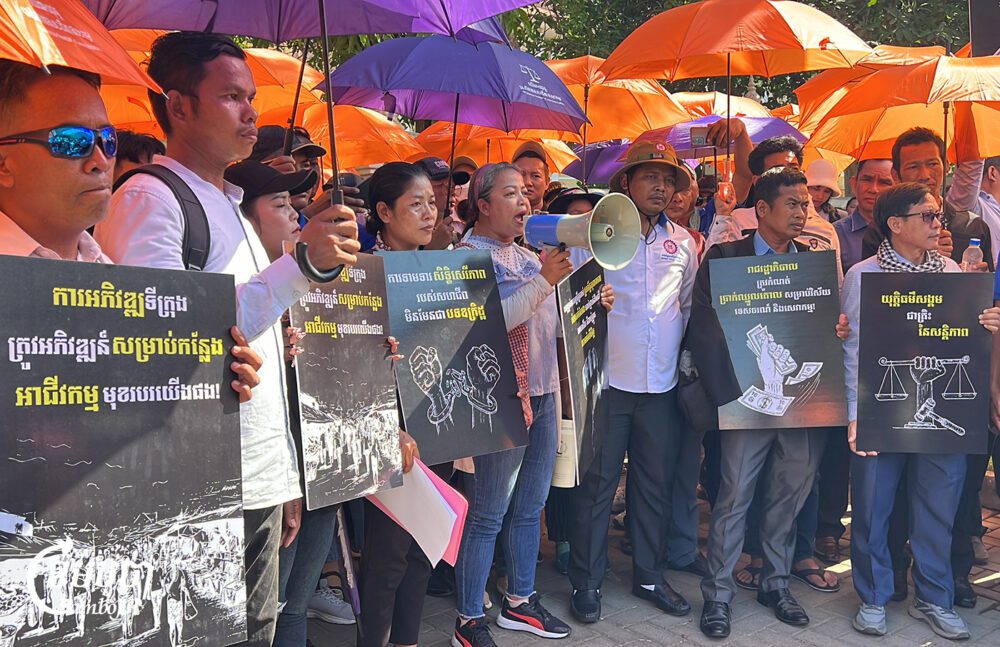Stung Treng and Kratie, Cambodia: The Mekong River, a lifeline for millions in Southeast Asia, is facing an ecological crisis. Unpredictable water levels, declining fish stocks, and the disappearance of the iconic Irrawaddy dolphin threaten the livelihoods and traditions of communities along the river.
The mighty river carves a path through Cambodia’s northern Stung Treng province, bordering Laos. Its deep pools shelter a unique aquatic fauna, including the giant stingray. Locals have long relied on the river’s bounty, casting their nets in the silty waters for sustenance and income.
Phoy Vanna, 58, has witnessed firsthand the change in the Mekong. A member of the Preah Rumkel ecotourism community, he points to fluctuating water levels caused by dam construction and climate change as a major threat. “These changes are killing the flooded forests crucial to the river’s ecosystem,” he explains to CamboJA.

Despite these challenges, Vanna remains passionate about the Mekong’s natural beauty. “Waterfalls, islands, diverse wildlife—these were always our treasures,” he says. Sadly, the loss of iconic Irrawaddy dolphins, a major tourist draw, has taken a toll. “The dams and changing climate have driven them away, as well as much of our tourism income,” he laments.
The consequences are stark. “Families who fished for generations can’t make ends meet,” Vanna says. “Fish stocks are dwindling because of dams, illegal fishing, and disturbed river patterns.” Some villagers have no choice but to leave and find work elsewhere.”
Cambodia’s declining fish catch paints a stark picture. The fisheries administration reports a 13.71% drop from 2019 to 2020, with a further 7.3% decline in 2021.
Phoy Vanna directly links this decrease to upstream dams. “This dam’s construction threatens fish, dolphins, and the entire ecosystem,” he asserts. “We’ve petitioned for action, but they blasted rocks with harmful pollution, harming wildlife and people alike.”
Vanna further highlights government inaction as a compounding factor. “[Authorities] ignore concerns and fail to enforce the law,” he says. “They’re neglecting their duty, and people are suffering.”
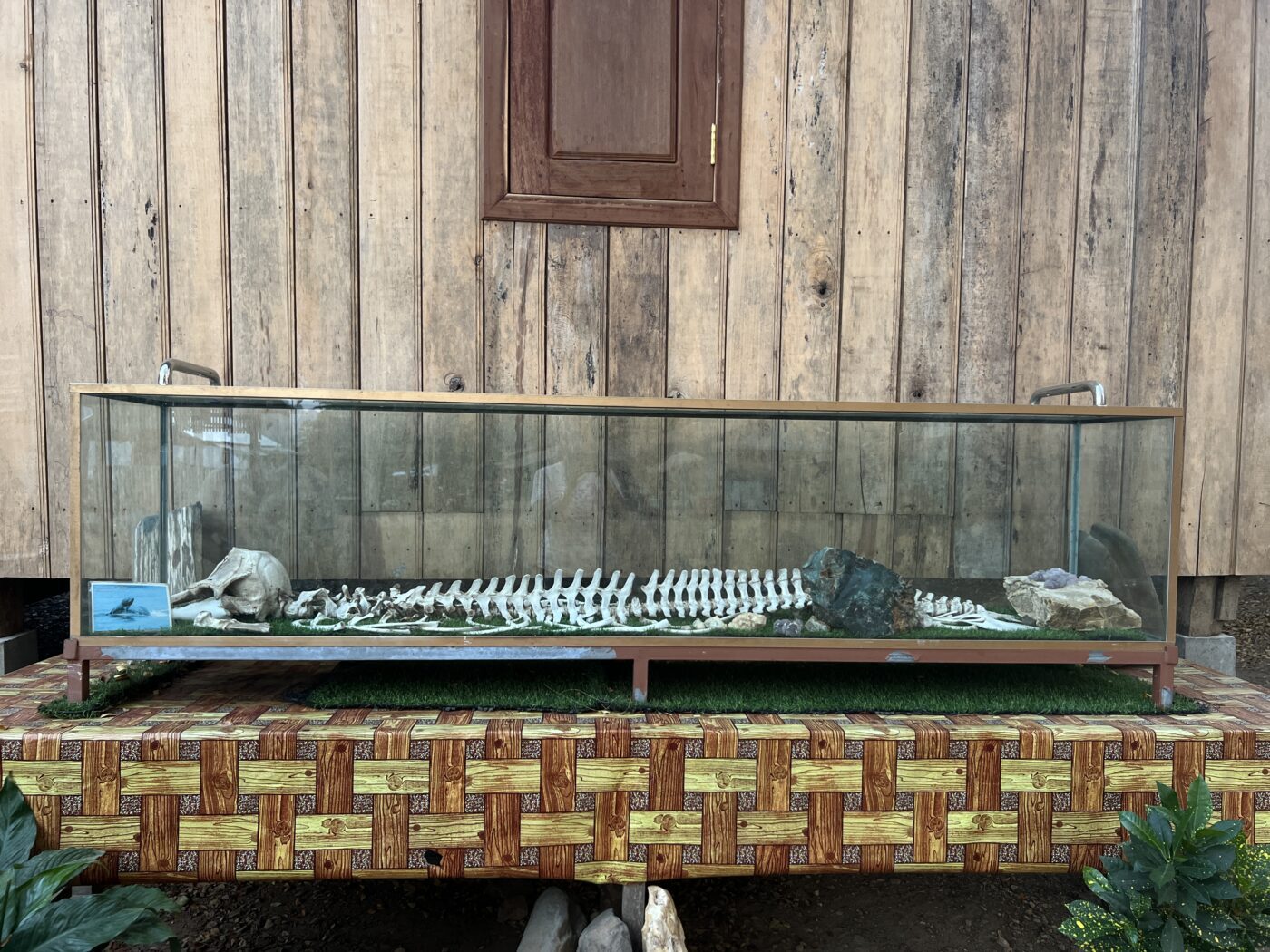
Interviews with villagers echo Vanna’s assessment. Dolphins are no longer present in Anlong Chheu Teal since 2022. “Things are changing for the worse,” one villager lamented. “Tourism is declining, crops are failing, and water is scarce.” It’s hard to make a living.”
Climate change and upstream dams
The Don Sahong Dam, located less than 2 kilometers from the Cambodian border in southern Laos, has been on the Mekong for over 3 years. Scientists have identified the area as an important gateway for fish traffic throughout the Lower Mekong Basin.
The project is a joint development between Malaysia’s Mega First Corporation Berhad and the Government of Laos. Feasibility studies conducted in 2006 led to a 2015 agreement to build and operate the facility, with operations commencing in 2020.
The Don Sahong Hydropower Project produces 260 megawatts of electricity and will be situated in one of the braided channels in the Mekong River’s Siphandone area of Southern Lao PDR. This project utilizes 15% of the total Mekong flow.
According to Earthrights International, a nonprofit human rights and environmental organization, the Don Sahong dam poses a serious threat to the Lower Mekong basin’s commercial and subsistence fisheries.
Additionally, the Cambodian Inland Fisheries Research and Development Institute (IFReDI) found in a 2012 study that the Stung Treng dam would reduce aquatic food yields, with the development of the Stung Treng dam alone predicted to reduce fish and other aquatic animal yields by 6% to 24%, or 34,000–145,000 tons, by 2030.
From those who call it home
Horm, a 40-year-old mother of four from Koh Chheuteal Thom, emphasizes the Mekong ‘s vital role in her community. “The river is everything,” she states, noting recent ecological changes including fluctuating water levels, increased heat, flooded vegetation, and declines in fish populations and dolphin sightings.
Horm directly links these changes to the Don Sahong Dam’s construction, claiming reduced fishing yields and difficulties cultivating crops along the riverbank. “Growing vegetables near the riverbank is not possible,” she explains. “Sometimes they release water and cause flooding. I have to buy seeds and replant, which is very difficult.”
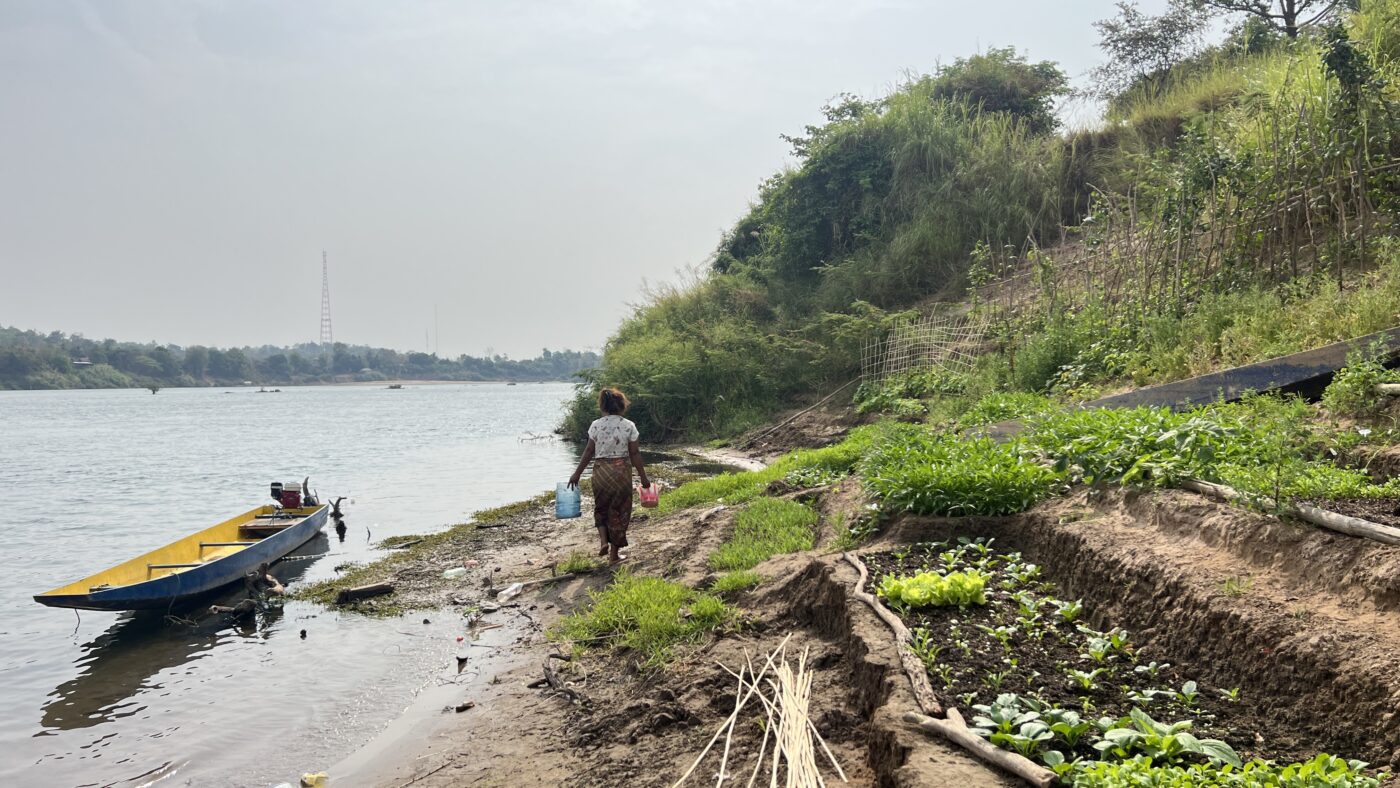
She also expresses health concerns, describing instances where the river water turned white after boiling, leading to coughs in her children. She feels dependent on the river, yet she fears for her family’s health when the quality of the water is out of control. “I am afraid I may not be able to pay for treatment if I get sick,” she states.
However, the dam investor came up with the Environmental Impact Assessment (EIA.) report stating that the Don Sahong Hydropower Project will have minimal impact on downstream flows in Cambodia or the Mekong Delta. This suggests the project won’t affect the Tonle Sap’s ecology and economy or saline intrusion rates in the delta.
No creature was spared
Eam Sam Un, Biodiversity Research Manager at the World Wildlife Fund (WWF), observes the wide-ranging impacts of climate change. These include rising global temperatures, shifting weather patterns, and altered Mekong River flows. He notes that these changes directly affect fish reproduction, migration, and feeding patterns.
“We’ve seen dramatic changes in the Mekong’s water level and flow,” Sam Un explains.
“This has led to shallower sections, increased water temperatures, and overall disruption to fish, dolphins, and other biodiversity dependent on the river.”
Sam Un states that while climate change likely affects Irrawaddy dolphin populations, specific studies are lacking. He emphasizes that illegal fishing methods, including nets and electro-shocking, pose the most immediate and documented threat to the dolphins.
“Examinations of dolphin corpses indicate that these illegal fishing practices are the primary cause of death,” Sam Un states.
Lives under threats
The Greater Mekong Region depends heavily on the Mekong River, which is also a biodiversity treasure trove with over a thousand new species found in only ten years. The river is home to a variety of extraordinary and unusual creatures, including the giant Mekong catfish, the huge freshwater stingray, the giant softshell turtles of Cantor, and the Irrawaddy dolphin.
A 2022 online webinar detailed the detrimental impact of upstream hydropower dams in China and Laos. These dams disrupt the Mekong’s natural cycles, altering crucial drying periods for flooded forests and affecting various species.
Ke Van Sai, 73, village chief of Chheuteal Thom, laments the loss of fish and dolphins from the Preah Rumkel dolphin pool. This ecological decline has dramatically reduced tourism and led to economic hardship, forcing approximately 40% of villagers to migrate for work.
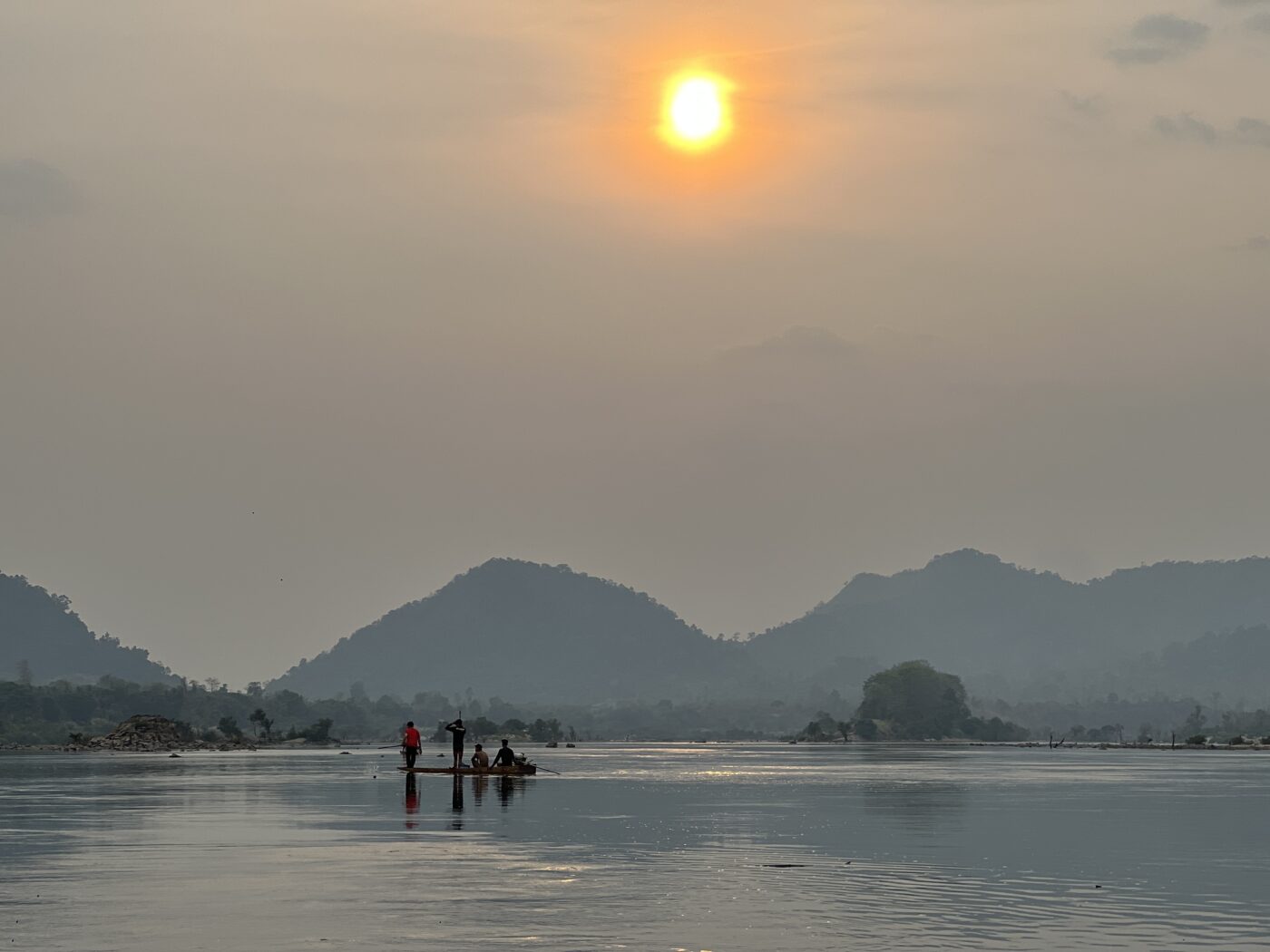
Van Sai alleges collusion between illegal fishers and local officials. To CamboJA he states, “People fish illegally because of their connection with authorities. If someone cuts this controversial line, nobody will dare do it. I don’t blame anyone, but it is true.”
Yan Suntak, 69, village chief of Preah Rumkel, expresses sadness over the loss of dolphins in Anlong Chheu Teal. He observes the death of large flooded trees due to irregular Mekong fluctuations, noting how changing water levels prevent root growth and lead to tree mortality.
Who is actually to be blamed?
Ian Baird, professor of geography at the University of Wisconsin-Madison in the United States, told CamboJA that what has been happening to the river in recent decades is that dams in China are storing water during the rainy season and releasing it during the dry season, leading to more water in the Mekong in the dry season.
This increased water is damaging the ecology of the Mekong in Cambodia, causing seasonally flooded forests between the Cambodia-Laos border to Stung Treng, in northeastern Cambodia.
“This is negatively impacting many aquatic species, and also the livelihoods of local people,” said Baird.
Baird stated that the Don Sahong Dam does not primarily affect the lower-steam rivers or flood trees. As for the thirteen upstream dams in southern China, only two have very large reservoirs capable of storing water during the rainy season and releasing it during the dry season.
“The Don Sahong Dam has a small reservoir, and it cannot store water during the rainy season and release it during the dry season. It can cause some daily water fluctuations, but it cannot change seasonal water levels,” said Baird.
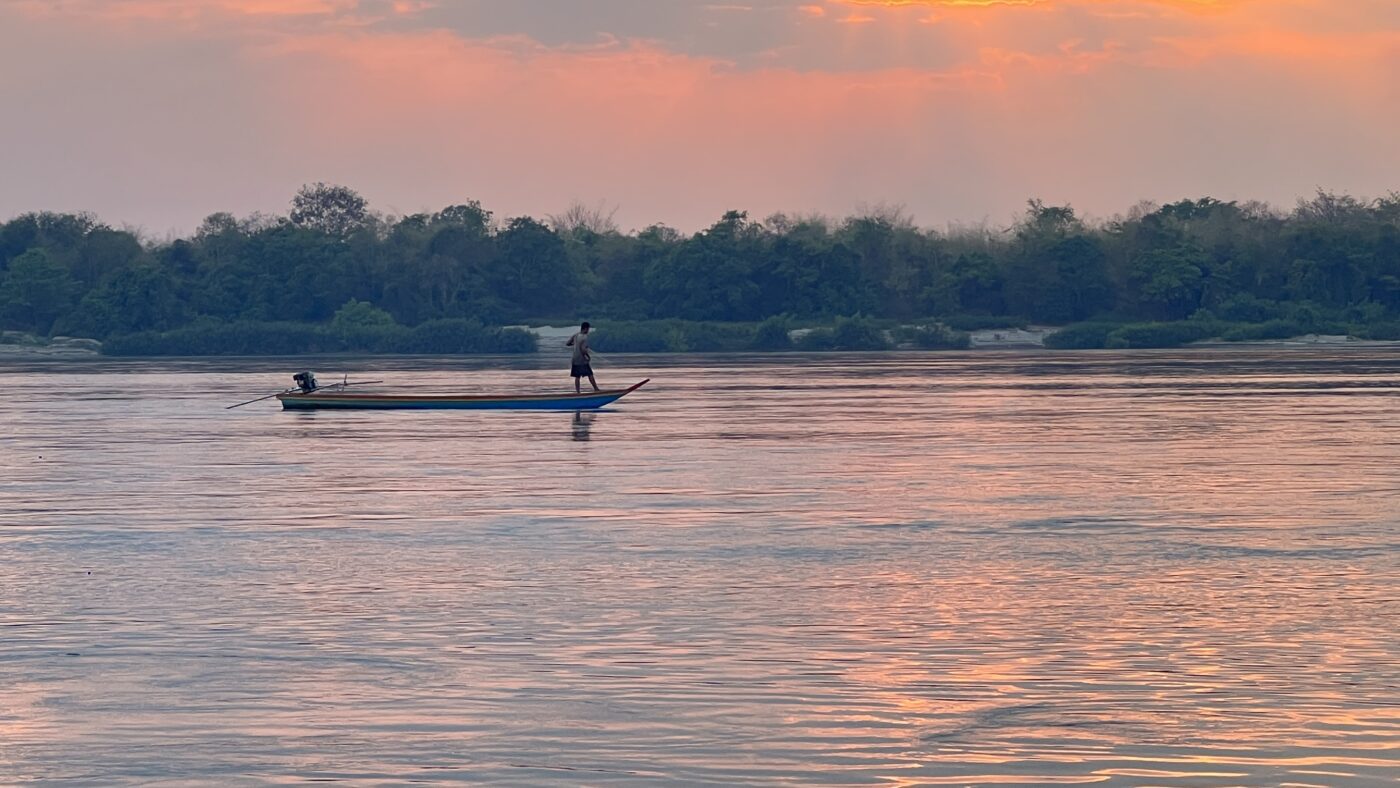
Baird was concerned about the negative downstream impacts of upstream dams on dry-season water levels in the Mekong River in Cambodia. These increased flows are negatively affecting the ecology of the river and the livelihoods of people who depend on it.
“The best way to alleviate these impacts would be for the dams upstream to release water downstream in a way that replicates natural flows,” said Baird.
Pun Chanthyda, an active member of the Preah Rumkel community, observes ongoing forest decline and a significant decrease in fish populations. She attributes this to increased water flow and prolonged flooding, both prevent tree root growth.
“The reason why the forest is flooded is because the water flow is stronger than before. Second, the trees are soaked for five years, the river water does not recede, so the trees do not take root.” She said.
The Mekong River Commission and a spokesperson from the Ministry of Environment did not respond to CamboJA’s request for comments.
According to a 2020 survey, Eam Sam Un reports a stable population of 89 Irrawaddy dolphins. He notes a historical decline in both population and geographical range.
Sam Un emphasizes the dolphin’s role as an iconic species and an indicator of ecosystem health. He stresses that conservation efforts benefit the entire river ecosystem.
Dolphins are economically significant, with tourism serving as a significant source of income for local communities.
Tourism has declined by 70% in Preah Rumkel due to dolphin deaths, though efforts to promote alternative attractions show promise.
Vanna looks at the dead dolphin skeletons displayed at the Preah Rumkel Tourist Office. They stand as a stark testament to ecological loss, a haunting echo of what once thrived in these waters.
“This is what remains for tourists, and for our children who might dream of seeing a living dolphin,” Vanna says.


